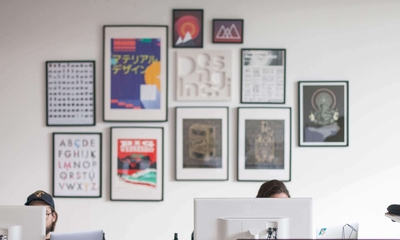
August 13, 2019
Remote and hybrid work has become commonplace—or at least it has in my neck of the woods. While the topic has been written about extensively, it’s usually through a somewhat sterile, business-centric lens that provides plenty of persuasive statistics but very little in the way of actual insight. I wanted to provide a more candid perspective of what it’s like to work exactly 1,058 miles away from your team.
I’m Andrew, senior copywriter at Dialpad, and one of the 20 or so full time remote employees. I haven’t always worked remotely; I started my tenure in Dialpad’s Vancouver office in July of 2017, and moved to an island off the coast of British Columbia, Canada in December 2017.
The reason for the move was straightforward: Vancouver is beautiful, but it’s also one of the most expensive cities to live in the world. After a decade of calling the city home, I came to the conclusion that it just wasn't sustainable to live there anymore. I wanted to be somewhere I could plant more permanent roots. I knew Dialpad was where I wanted to work long-term, and they approved of the arrangement. So the stars aligned, and here I’ve been ever since.

A typical day
My workday starts a lot like yours. I’m out of bed, drinking coffee, and checking emails at 6:30. I’m showered and dressed by 7:30. And I’m at my desk by 8:30. The time I’d normally spend commuting is usually spent reading the news, Redditing, going for a walk, or a combination of the three. But instead of a crowded bus, sweaty bike ride, or staring infuriatingly at the same 50 feet of road for an hour every morning, I have a nice little mental buffer that makes for an always-pleasant start to my day.
After checking my calendar and taking care of basic administrative tasks, I’ll prioritize my workload for the day. To get my hands dirty in actual task work, I’ll typically warm up by editing any upcoming posts we have for the blog. Then move onto other one-off tasks that need my attention.
Post lunch, I’m back at the grind. My ability to focus is typically higher in the afternoon, so I’ll work on things that demand more concentration. I’ll dedicate a few hours to writing content for larger projects like product launches or campaigns. When time or weather allows, I’ll step outside for a walk to clear my head and keep my thinking fresh.
Throw in a meeting or two, and that encapsulates what most work days look like for me.
What makes working remotely work
It wasn’t long ago that working remotely was impossible for all but certain niche roles. Access to high speed internet changed that. I can now connect with coworkers around North America as quickly and seamlessly as I could if they were parked right next to me. Technology has not only made remote work possible, it’s made it relatively easy (from a practical standpoint—more on that later). These are some of the tools that make it all happen.
Tools
The cloud and all of the cloud collaboration software that comes with it has been huge. We really rely on instant messaging; it makes sharing documents and syncing on small things simple and fast. It’s the next best thing (and sometimes better than) walking up to someone’s desk to chat.
Asana is our weapon of choice for project management. It doesn’t matter where, when, or how I work; project stakeholders and collaborators have total visibility into what I’m working on, the progress I’ve made, and can access it all from one place. Little-to-no cat wrangling required.
Obviously, Dialpad is always at my side as my business phone number and business text messaging system. Because it lives on all of my devices, I’m easy to reach no matter where I am. So when those emergency conversations need to happen, they do. And that’s really important to me—if my team can’t physically see me, I want to make sure they always have a way to reach me. It’s my most important tether to my company—and largely what makes it possible to do what I do from where I do it.
Last but certainly not least is Dialpad Meetings. Being remote means lots of virtual meetings. Dialpad Meetings makes them frictionless. They’re easy to get into. The audio quality is clear. You can share your screen so presentations are easy to follow. And the HD video function makes it as close to being in the same room as technology currently allows. Dialpad's video conferencing is in the same platform where I make voice calls and send messages, which adds a layer of simplicity to my day. That may sound like a pitch, but it’s one I absolutely stand behind.
It’s important to note that it’s not just about the infrastructure or tools. Your team has to be on board, too. Given that Dialpad operates out of several countries with 20 remote workers to boot, we’ve created a culture of communication and have become quite effective at making the wheels turn simultaneously on different continents.
Travel
Fact: some meetings are better when they’re face-to-face. So a few times a year, Dialpad will fly me into the SF office for a few days for large project kickoffs, brainstorming projects, or larger company events. Being able to work together and collaborate in person is wonderful. But the larger takeaway for me is that I get to know and even bond with the people that I work with at a distance every day. Developing these relationships in person makes it so much easier to work together when you’re not sitting a few feet away.
Challenges
It would be dishonest to tell you that working remotely is easy—it’s not. Sure, the communication tools to do it are there. And being able to skip the commute and work from a couch is great. But it’s not everything. And to be successful at it, you need to address the difficulties that come with it.
Things move fast
This is more a byproduct of being a mature technology startup than being remote location. But when you’re physically separate from the day-to-day, you need to learn how to keep up. That means being prepared. It means asking questions. Sometimes seemingly stupid ones. Without total and absolute clarity about what’s required of you, you will trip (first-hand experience). And being remote isn’t a good excuse—it’s the worst excuse.
The water cooler
I’m currently writing this from our SF office. It’s 10:44 a.m. and I’ve already had three in-passing work-related conversations. This is the norm when you’re in an office, but rare when you’re not. Being remote, sometimes you miss out on important conversations that provide context to projects. You can mitigate this, again, by being prepared and asking questions. However, it’s a real drawback that simply comes with the territory. A simple fix: Have a virtual water cooler in your company's messaging platform.
Isolation
If you’d told me three years ago that working remotely can get lonely, I would have likely feigned agreement, secretly thought you were overstating the issue, and continued romanticizing the idea of being able to kick it in a pair of sweats from 9-5. The reality is that isolation is something that almost every remote worker will experience. The daily face-to-face interactions you have with your coworkers shouldn’t be taken for granted—they have a massive positive impact on your psyche that won’t notice until it’s gone.
I’ve been able to manage this a few different ways:
- I’m vocal about it. When I’ve felt disconnected from projects, teams, or even the daily flow, I say so. Ignoring it improves nothing. And simply speaking about it makes the issue easier to identify and resolve.
- I get out. It bears repeating. Going outside—even for just a short walk or a coffee—breaks up your day, puts you in front of something other than a computer screen, and keeps your thinking fresh. And when it comes to solving problems, occasionally removing yourself from them is just as important as attacking them head on.
- I get social. It’s no surprise that, given the rise in popularity of remote workers, I know a few people in very similar arrangements. We often meet up for lunch or after work in the same way you would with your coworkers. While we may not have the same employers, our challenges are similar and sharing them is helpful.
- I create structure. With the exception of commuting, I do the same things I would if I were going into an office every morning. I have an office with a door that I enter every morning and leave every night. It’s still work and should be treated as such.
What it all comes down to
In my experience, the pros vastly outweigh the cons. Dialpad has provided me with the tools, technology, and even cultural approach I need, not just to do my job, but to be truly engaged with it. Being a business communications provider, Dialpad’s remote workforce is very much part of our “dogfooding” process. But with more than 20 full-time remote employees, and the fact that I’ve been working remotely for more than a year-and-a-half, proves that distributed workforces work.
The formula for success isn’t a secret, or even difficult. Communication is key to everything—for both remote and in-office workers. Be transparent about issues as they arise. Be accessible and accountable at all times. And perhaps the most important thing to keep in mind is that results are what really matter.






